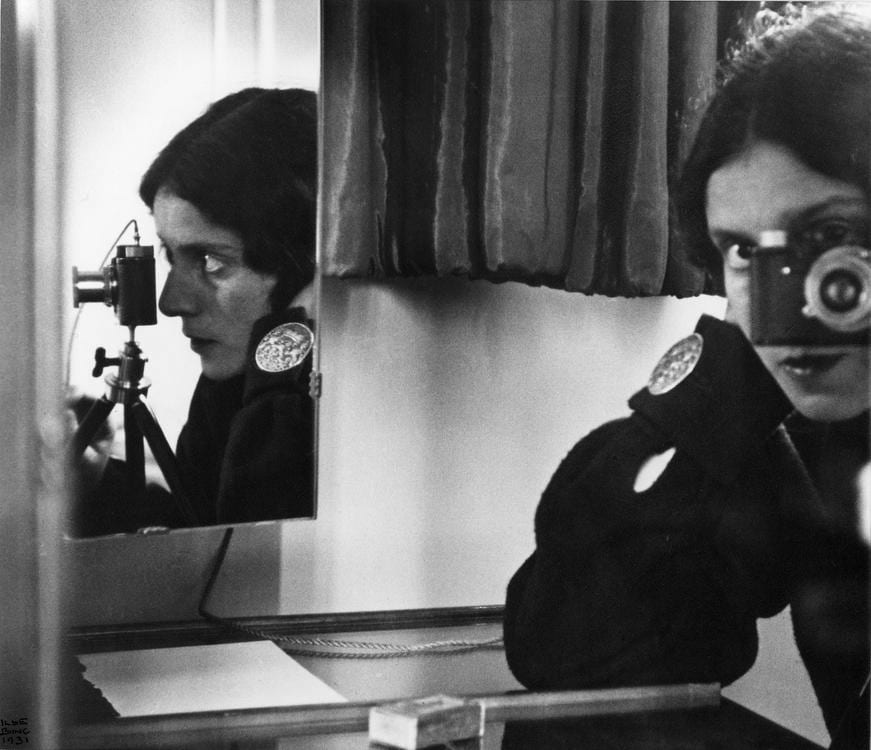Ilse Bing: Queen of the Leica
Ilse Bing was a leader among those who made Paris the center of modern photography in the 1930s becoming known as “Queen of the Leica” for her influential mastery of the innovative hand-held camera.
The Early Years
After moving to Paris in 1930 from her native Frankfurt to pursue her ambitions in photography, Bing began an extraordinary decade that saw her working in photojournalism, portraiture, and advertising. The young artist succeeded commercially even while establishing herself at the forefront of the city’s avant-garde.
New Vision Photography
Bing created a distinctive personal style by blending many of the currents that were then shaping the medium by accepting the symbolism and dream-imagery of Surrealism, sharing the enthusiasm for technology and startling perspectives of New Vision photography, and recognizing the pursuit of documentary photographers to capture more penetrating records of the world. By 1932, Bing was exhibiting at galleries alongside artists such as Henri Cartier-Bresson, Man Ray, André Kertész, and Brassaï, but a year earlier she would create her most influential and iconic image as an artist newly immersed in the modernist currents of interwar Paris.

Self-Portrait in Mirrors
The artfully staged “Self-Portrait in Mirrors” was taken in Bing’s room at the Hotel de Lôndres early in her evolution as an artist. In the image, Bing looks intently at her own reflection in a mirror, focusing her Leica at the same time on her reflection. A second mirror on the side shows her profile. The photograph’s complex interaction between the mirror reflections and in the camera’s eye blurs the simple notion of an image as an objective duplication of reality. It also reasserts the presence of the artist and their role in creation reinforced by Bing’s focusing eye appearing slightly above the camera.
A Fractured Self
The photograph suggests the concept of a fractured self that is ever shifting and evolving. This notion was being explored by contemporaries through Sigmund Freud’s psychoanalytic theories and also reflected in Cubist work. Influenced by this, Bing deliberately fragments and flattens the composition of the photograph by utilizing the second mirror making the space and her face appear strikingly Cubist.
Suspending Time
The concept of time in the image appears at once as ongoing and suspended. The moment is not a fixed point in time, but is the conjunction of multiple directions and occurrences suspended in harmony.
Today
Today, Bing’s portrait remains emblematic of a time when many women were embracing modernity and independence along with the new opportunities that technology afforded for artistic expression. Now recognized for her innovative explorations of multiple lines of thought from the period, her work can be found in many major public collections including the National Gallery of Art in Washington DC, the Metropolitan Museum of Art in New York City, the Museum of Modern Art in New York City, and the Art Institute of Chicago.
